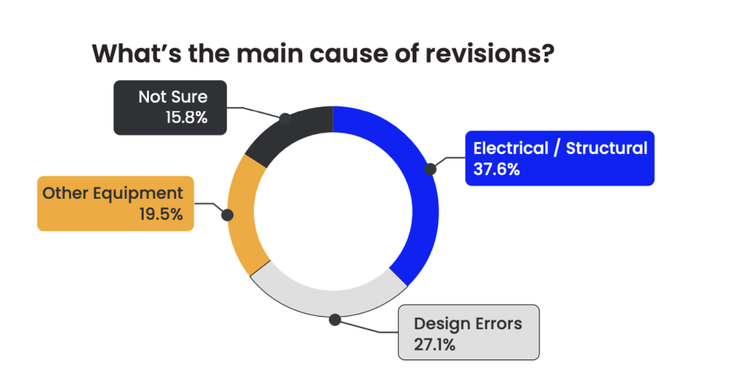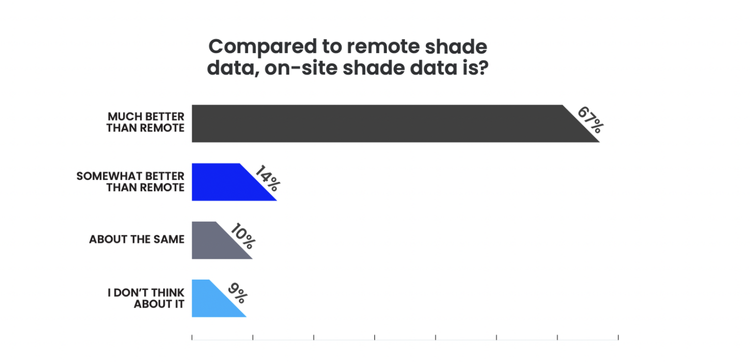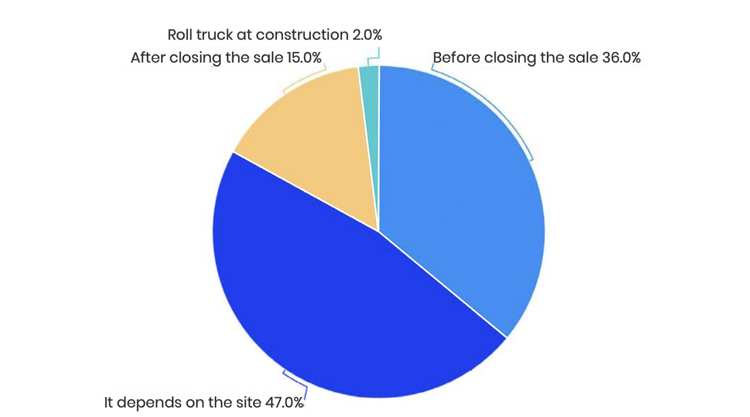Solar generation is rapidly increasing as more people want more energy independence or to simply cut their electric bills.
Combine growing demand with increases in satellite and aerial image quality, and it’s easy to think you can stop doing on-site surveys in favor of remote data. However, surveys need to collect more than simply roof measurements; you also need electrical and structural analysis, overall site context (from walking around the property), and on-site shading analysis.
Over half (57.5%) of Designers say that incorrect structural, electric, or equipment data is the leading cause of project delays or problems. Further, 81% of Surveyors believe that on-site data is better than remote data for shading analysis.
Here are some key reasons why you can’t eliminate pre-install day site visits entirely.
1. Limited coverage from remote data sources
An increase in remote image quality doesn’t mean you can use it everywhere; satellite imagery is infrequently updated at best (Google Earth, for instance, updates every 2-3 years). It’s also limited in many regions due to various military regulations or security legislation. Further, many popular satellite databases don’t have significant coverage outside of urban areas. And flying planes to get aerial data is expensive.
The result is relatively grainy images that can’t capture all the details of different roof types. This limitation leads to Designers having to work on best guesses and hunches–in the end, causing more redesigns that shrink a project’s margin.

Source: 2023 Scanifly Designer Outlook
2. Diversity in roof and tree types
Across the United States, there are dozens of different home and roof styles with native tree species. There are old bungalows in the Northeast, Spanish tile in Arizona, tree-covered properties throughout the Pacific Northwest, and big mansions in Texas.
However, even regional or local Contractors will have to handle significant diversity in homes. A single community in the Northeast, for example, might have mega mansions, old bungalows, and ultra-mod new build homes.
Remote data is also typically fairly old (a year or more) by the time it reaches mainstream databases. From a foliage perspective, this means trees could easily have grown, been cut down, or new trees planted. From a roofing perspective, a lot could change; everything from new builds not covered in satellite databases to someone re-roofing their home or building an extension on the house.
3. Shading analysis requires up-to-date information
Remote shading data is typically outdated by the time it’s published–one platform’s recent update brought its average data age to 2018, for example–because people change vegetation on their property. A homeowner might cut down a tree and plant a new set of trees near the property. Or the tree in the satellite image is still there but has grown.

Source: 2023 Scanifly Surveyor Outlook
Ignoring accurate shade analysis may not delay the project from a design perspective, but it could lead to very unhappy homeowners–and problems for you if you offer production guarantees.
4. Internal survey needs
Even if you could get all your exterior needs completed via satellite, you can’t get internal data remotely. That means no data on the electrical panel or roof’s structural integrity, two common issues leading to redesigns. Many Contractors address this by using a strategy of remote imagery for external surveys and sending someone for internal surveys.
However, if someone is already on site, it’s better to gather aerial data in real-time, either by hand (which takes about 30-60 minutes) or with a drone (which takes about 15 minutes). The data will be more accurate and provide a more holistic picture of how external features connect to internal structures, making a Designer’s work a lot easier.
5. Making sales easier
The vast majority (91%) of Contractors conduct at least one site visit, usually for sales purposes. However, many salespeople are not technical. By not doing on-site visits with a technical team member (e.g. Surveyor), homeowners have to direct all technical questions to a salesperson. This takes them away from focusing on making the sale and in many cases, brings them into unfamiliar territory, wasting time and reducing the overall customer experience.

Source: 2021 Scanifly Solar Surveyor & Designer Outlook
6. Changing homeowner desires
Homeowners can change their opinions. Perhaps they agreed to run conduits down one side of the house, but now they want it on another. Or they agreed to a specific panel configuration but now want panels on a different roof section.
These types of changes happen frequently before final plan sets are delivered. Only working with partial remote data will not give you the insight you need to know if a homeowner’s demands are feasible–that means a truck roll at worst, or wasted Designer time at best.
A maturing industry requires quality
Speed and cost efficiency were the top two things that mattered in the early days of solar. Now the industry is flush with demand, technology has improved dramatically, and the general population is more aware of how solar can benefit them.
All that boils down to one thing–the industry is maturing. That means quality, accuracy, and precision will matter just as much as speed, if not more.
Further, one of the easiest ways to grow is through referrals. Focusing on quality with on-site visits for one customer could easily lead them to tell all their neighbors and friends about you. In an increasingly competitive industry, that additional social credibility could make all the difference.






